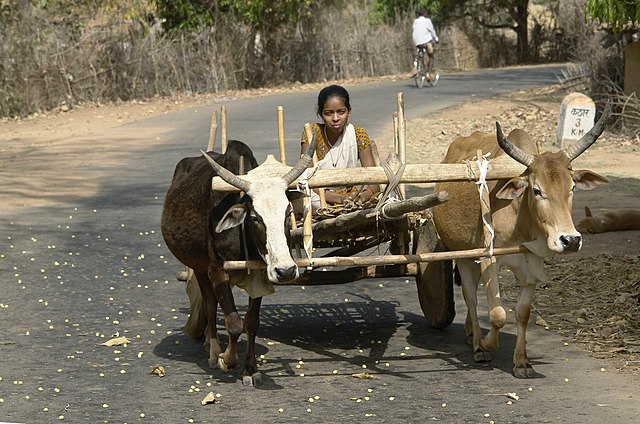Transport in India consists of transport by land, water and air. Road transport is the primary mode of transport for most Indian citizens, and India's road transport systems are among the most heavily used in the world.
Royal Palanquin of Mehrangarh Fort
A bullock cart
Human-pulled rickshaws still run in Kolkata
Public buses near Howrah Railway Station in Kolkata, West Bengal
Roads in India are an important mode of transport in India. India has a network of over 6,331,791 kilometres (3,934,393 mi) of roads. This is the second-largest road network in the world, after the United States. At of roads per square kilometre of land, the quantitative density of India's road network is equal to that of Hong Kong, and substantially higher than the United States, China, Brazil and Russia. Adjusted for its large population, India has approximately 5.13 kilometres (3.19 mi) of roads per 1,000 people, which is much lower than United States 20.5 kilometres (12.7 mi) but higher than that of China 3.6 kilometres (2.2 mi). India's road network carries over 71% of its freight and about 85% of passenger traffic.
A section of the Old Grand Trunk Road, one of the oldest roads in Asia. Originally built by Ashoka and rebuilt by Sher Shah Suri. Kos Minars (right) were used to mark major routes.
NH76: Part of India's Golden Quadrilateral highway network
Kalyani Expressway, West Bengal
NH75: Part of India's NS and EW Corridor highway network








